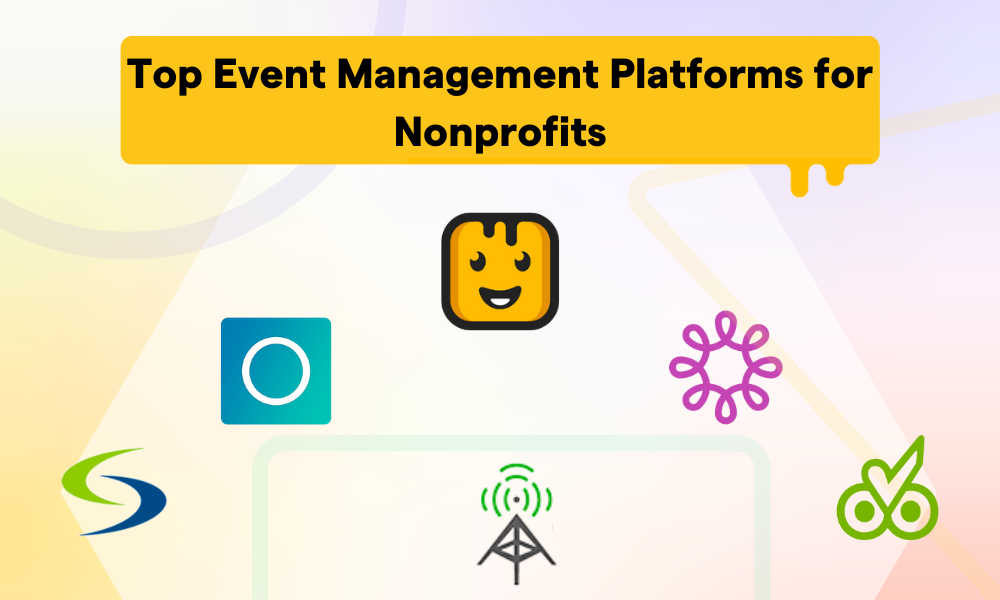Table of contents
Table of contents
Numerous global disruptions have resulted in inflation at levels the US hasn't seen in 40 years. Keep reading to learn more about inflation's impact on nonprofits and practical strategies organizations can implement to weather the storm.
How inflation is impacting nonprofit organizations
Inflation occurs when there's a continuous increase in the cost of goods and services alongside a decrease in the value of money. All you need to do is visit a gas pump or a grocery store to know that prices have risen, and this rise in consumer costs has hit nonprofits hard.
Here at Givebutter, we've seen firsthand the impact inflation has had on changemakers across the country. Here's just one message from a Givebutter user that reflects the burden many nonprofits are bearing.
%20(1).png)
According to the Bureau of Labor Statistics, consumer prices went up a whopping 9.1% in 2022 alone. For most nonprofit organizations, this change has dramatically disrupted their ability to carry out their mission, and other groups are facing challenges they didn't anticipate. Nonprofit Consultant and Givebutter Expert, Linda Handley, weighs in:
Inflation is running at a 40-year high. In turn, everything from gas and food to housing is significantly more expensive. When prices increase across the board, even the nonprofit arena is impacted. Why? Because for-profit organizations are increasing prices to cover the cost of goods; however, nonprofits are not able to do the same. Additionally, many nonprofits are seeing a major increase in the number of people looking for help and services. No matter what, nonprofits need to remain focused on their clients and increase their fundraising efforts. To make this possible, we are suggesting extra fundraising meetings to develop strong goals, strategies, and tactics for the remainder of 2022 and into 2023. Furthermore, additional grant writing, increasing corporate and donor outreach, and looking into systems to help you and your nonprofit receive online donations is ideal.
Here are just a few of the obstacles nonprofits are currently facing.
Rising costs 📈
Charities are paying more for materials necessary to carry out their missions than they were a year ago. These materials could include anything from the food served in programs to the printer ink and reams of paper used for administration. These costs add up quickly and can take a more significant chunk of change than organizations budgeted for.
Greater demand for services 🤲
Marginalized populations get hit hardest by the impacts of inflation, so community reliance on charities like food banks and rent relief continues to increase. We know this will continue through the current inflation because of the trend we saw during the COVID-19 pandemic. In fact, the Nonprofit Leadership Survey reported that 53% of organizations saw an increase in demand in 2020 alone.
Unfilled job openings 👤
Nonprofit employee burnout and turnover were already common issues in the charitable sector, and the added pressure of inflation is not helping. The cost of living is rising, and nonprofits often cannot raise wages for their employees as easily as their for-profit counterparts.
As the dollar continues to lose its purchase power, nonprofit workers may choose to leave the field altogether to meet their personal financial needs.
Shrinking capacities to give 💸
Nonprofit employees aren't the only ones having to adapt to inflation. Donors also feel the heat on their bank accounts and other assets, resulting in fewer or smaller donations to charitable organizations. Experienced in conjunction with a weakened dollar that doesn't stretch as far as it once did, this hits nonprofits as a double whammy.
Devalued grants 📉
Using last year's numbers in grant applications is unlikely to cover next year's costs. Say your nonprofit was awarded a $100,000 grant in 2021. That is only worth about $91,000 in terms of the 2022 dollar. Consider the depreciating value of grants when proposing budgets, especially if you're a nonprofit that covers a large portion of your overhead costs with grant funding. You may also want to consider diversifying your nonprofit funding sources.
7 steps nonprofits can take to weather the storm
Rather than closing your doors for good, consider ways you can recession-proof your nonprofit.
1. Adjust suggested giving levels and encourage recurring gifts 🔁
As your organization works to counter the effects of inflation, you must be clear and direct with your donors. Be as specific as you can when you explain why the same level of giving is no longer providing the same level of support.
Remember: Knowledge is power! Be thoughtful about your appeals, and increase the standard donation levels based on your needs. Here are other ways you can bring in more money for your cause:
- Share sponsorship opportunities at various giving levels.
- Offer free and paid ticket types for all of your events, and encourage attendees to add a donation to their ticket purchase.
- Remind donors how planned and recurring gifts can ensure your critical work continues without interruption.
Here's what Christina Edwards, Founder of Splendid Consulting and Givebutter Expert, recommends:
Now is the time to double-down on what’s working and to get creative on new strategies to increase your nonprofit’s awareness and revenue. Avoid doom-scrolling and consuming content that makes you feel worse about inflation! There are so many people who are perfect-fit donors and supporters for your nonprofit who are yet to hear about the powerful work you do…But, you have to ask for their support! Don’t decide for donors what they can and cannot afford. Your top priority is creating meaningful conversations and developing relationships that further your mission, visibility, and impact.
2. Offer non-financial incentives to retain staff 🏡
Think of creative ways to alleviate your staff's expenses like gas and childcare. You may not have much wiggle room regarding the rates you pay employees, but can you offer benefits like flexible scheduling and the ability to work from home? Plus, a better work-life balance can improve everyone's morale—and the quality of everyone's output.
3. Introduce additional volunteer opportunities 🏋️
As demand for your services increases, so does the number of hands necessary to provide them. Get creative with volunteering opportunities so community members can get involved with your mission beyond donating. Even helping with administrative duties can be met by skilled volunteers.
Post opportunities on VolunteerMatch.org, social media, and through targeted email blasts to connect with individuals who are eager to serve. Plus, volunteers are more likely to become donors to your charity or to increase their donations after volunteering!
4. Solicit in-kind donations 🛍
An in-kind donation is any non-monetary contribution a nonprofit receives. These gifts include physical goods, services, expertise, and cash equivalents like stocks and bonds. As the cost of goods increases, consider soliciting local businesses for in-kind donations to help keep overhead down.
Rather than hosting your benefit event at a hotel or casino, try finding a community space willing to donate it for the evening. Need a new logo? Look for a graphic designer who will create it pro bono.
5. Be strategic with your grant applications 🗂
Since grant values depreciate with the dollar, prioritize applying for grants you can use for undefined costs rather than specific services. Account for inflation in all your budget projections. If you have a good relationship with your institutional funders, be honest about inflation's impact on your organization, and see how they may be able to help.
6. Inflation-proof your portfolio ⚖️
If you are a large charity with excess funds in the bank, you would be wise to look into investment strategies to minimize that money's decline in value. Diversify your portfolio with stocks, bonds, and assets like real estate to protect yourself from inflation and ensure the longevity of your charity.
7. Ramp up with Giving Tuesday and end-of-year campaigns 💪
Giving Tuesday and the last three days of the year see the highest conversion rates compared to any other day. Even after an unprecedented year, the world saw a record-breaking $2.47 billion donated on Giving Tuesday 2020 despite being in the middle of a pandemic.
Harness this powerful and lucrative time of the year to offset other losses you may have incurred. With inflation hitting the nonprofit industry hard, it is never too early to start planning these crucial end-of-year campaigns.
Save money without sacrificing your mission
Several resources are available at discounted rates or entirely free to nonprofit organizations, allowing you to cut back on costs—not services or staff. Create marketing materials for free with Canva, learn how to apply for up to $10,000 in Google ad grants, and access everything you need to make this your most successful Giving Tuesday yet.
And when it comes to your fundraising platform, leave monthly fees behind by switching to Givebutter for 160+ tools and features to help you reach your goals—all completely free.
Take it one day at a time, and remember that we're all in this together. 💛





.png)




%20(1).png)






.png)






.svg)
.svg)
